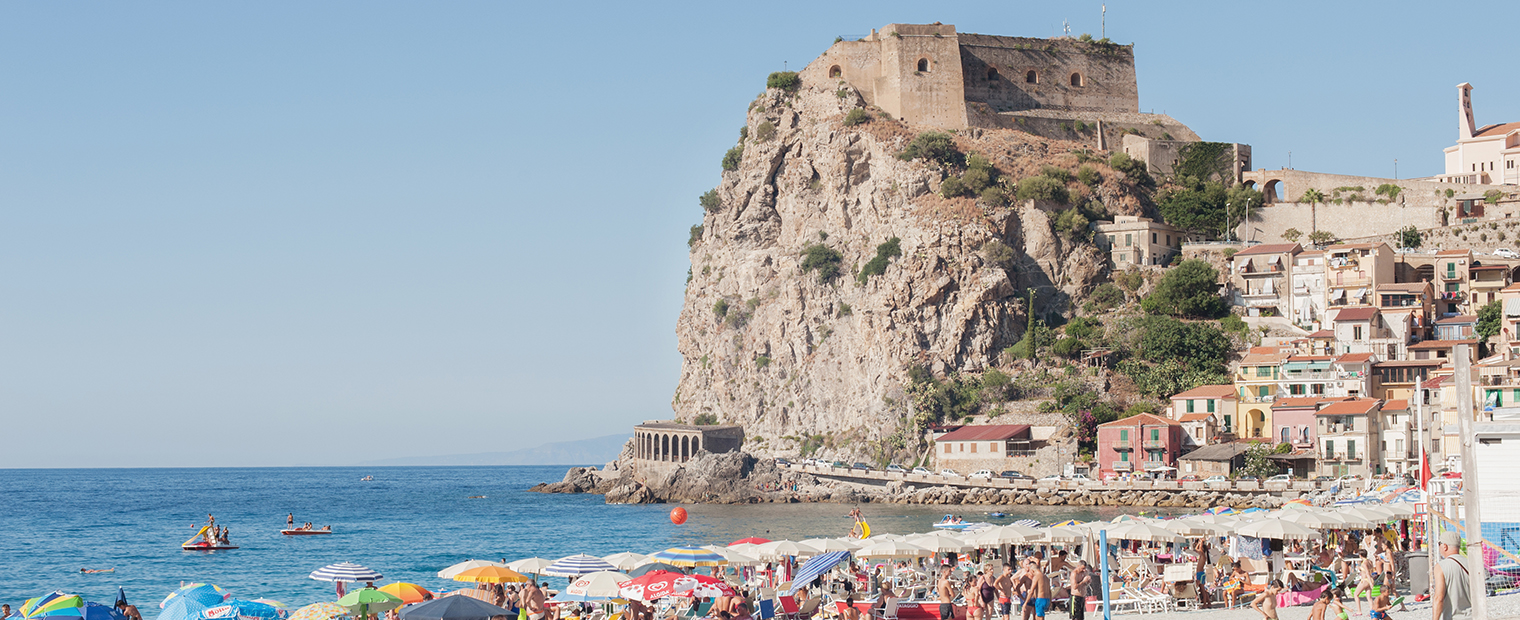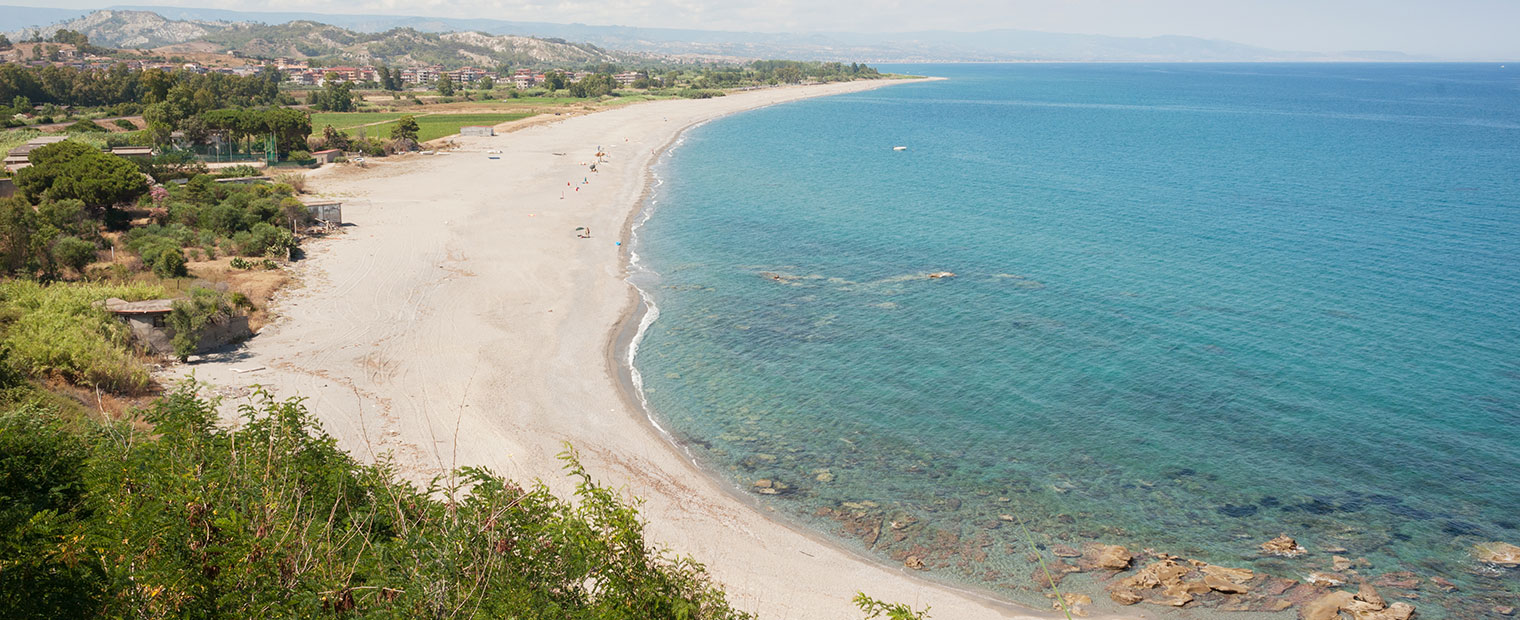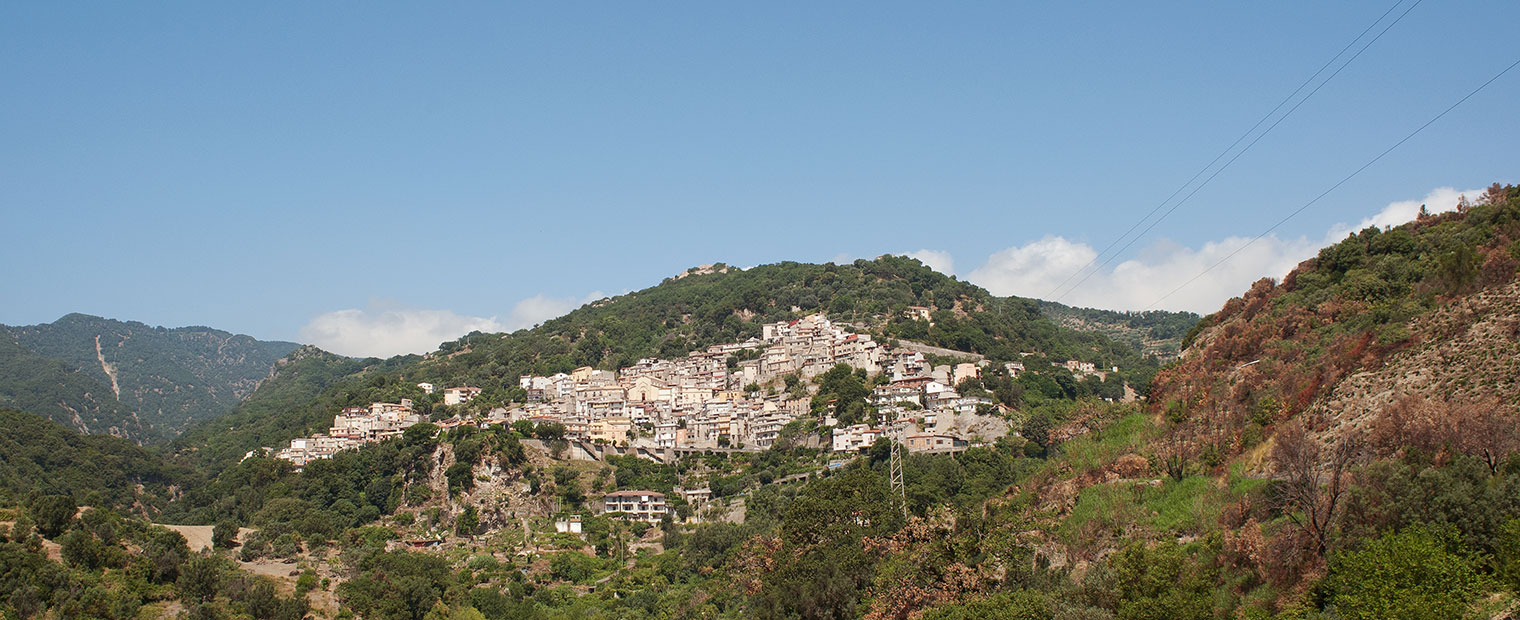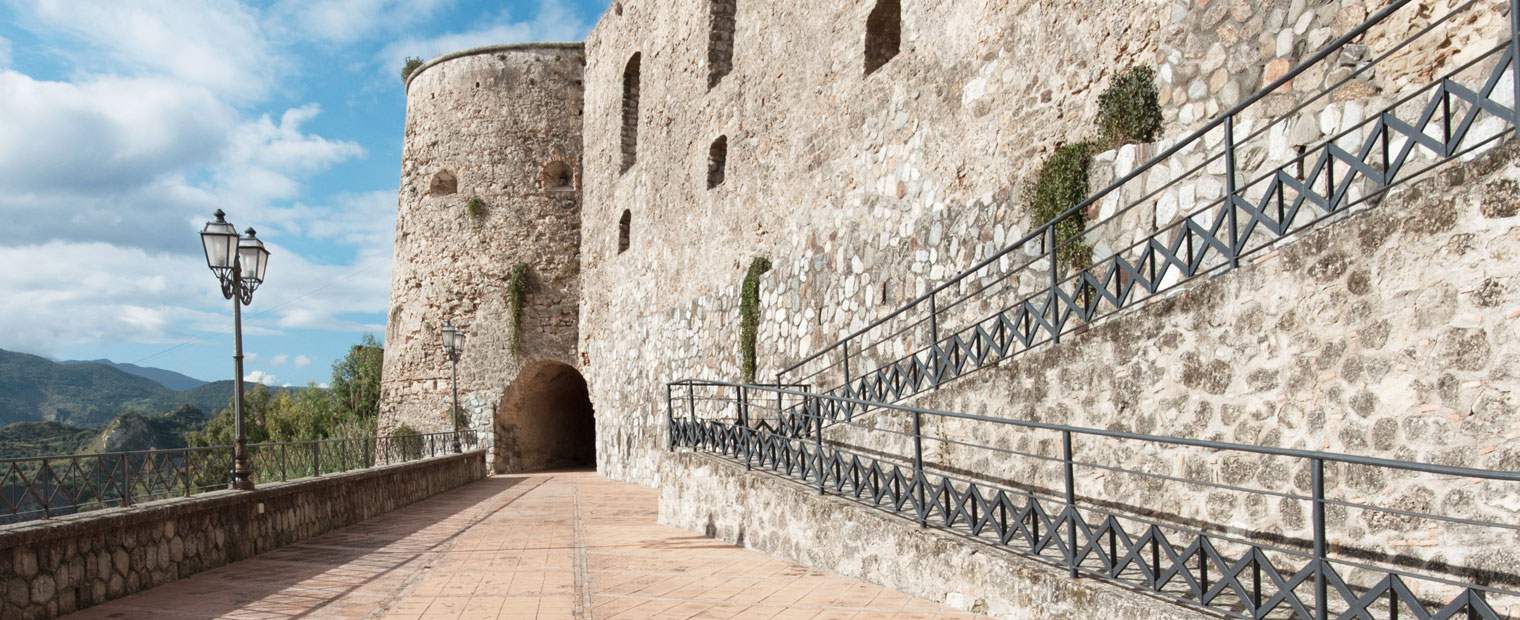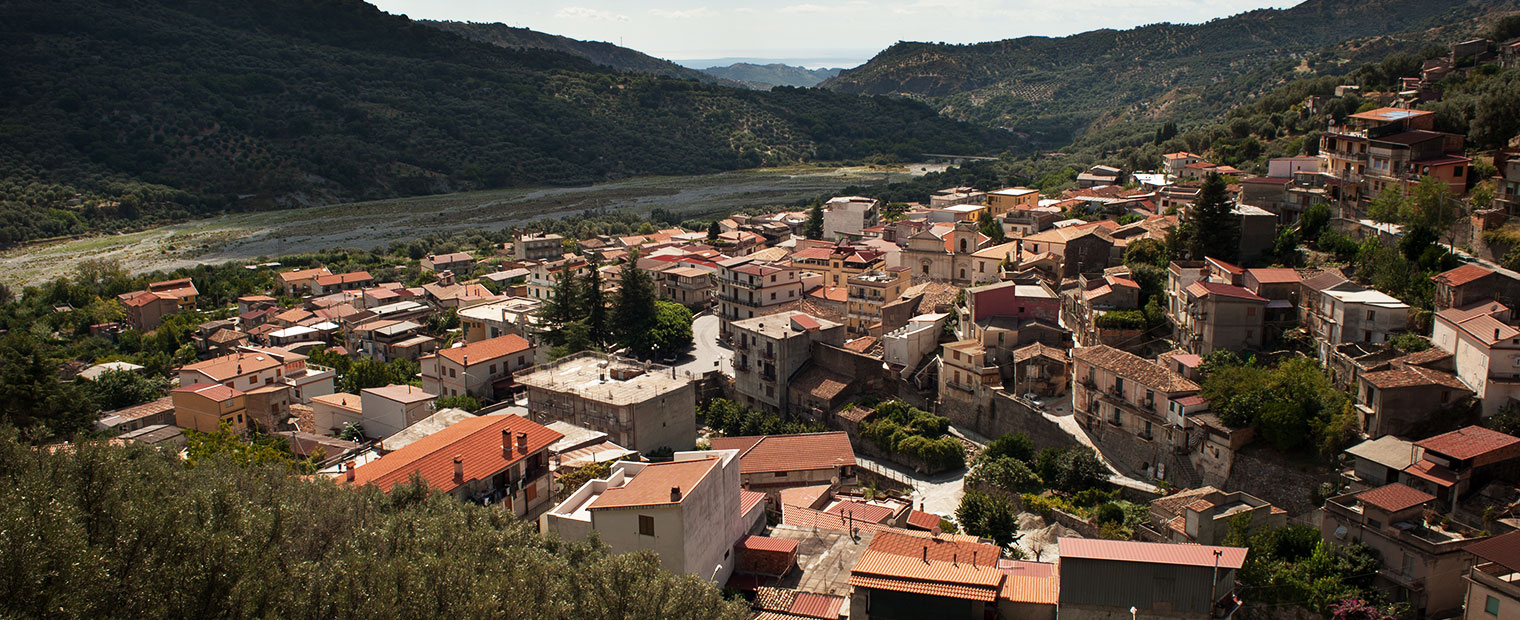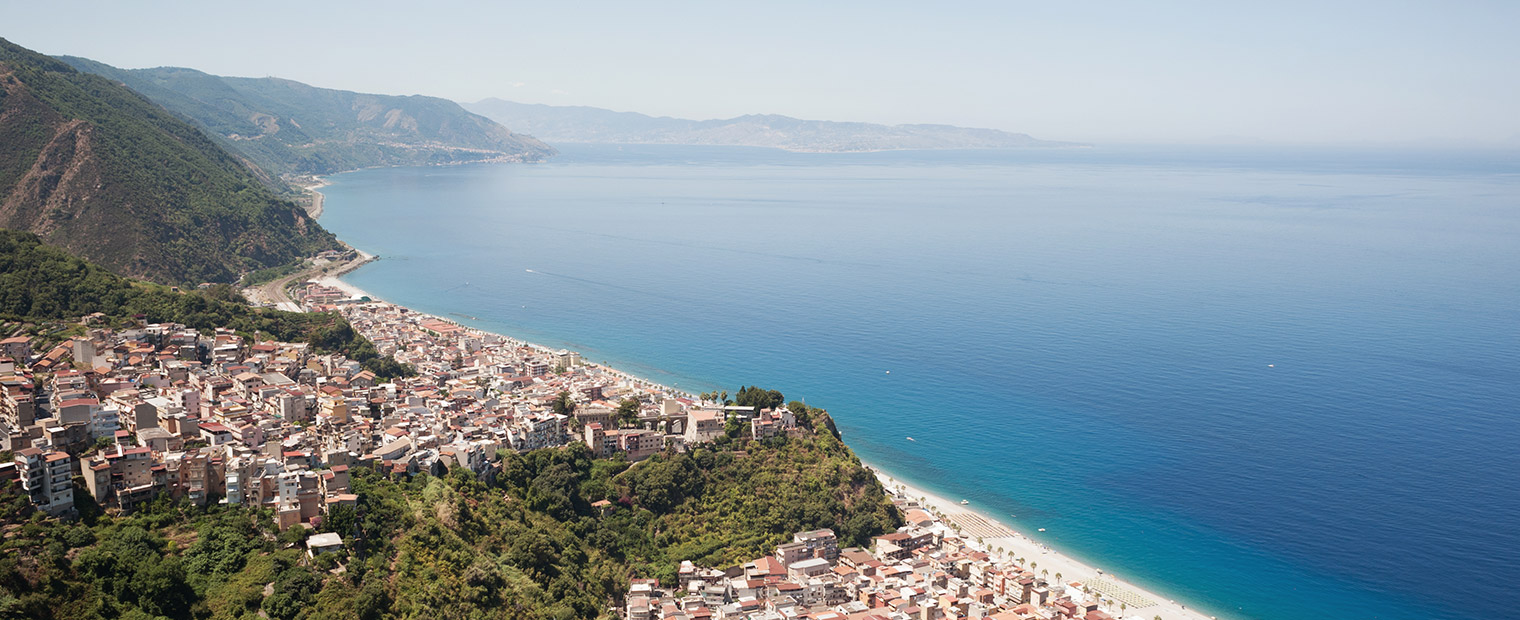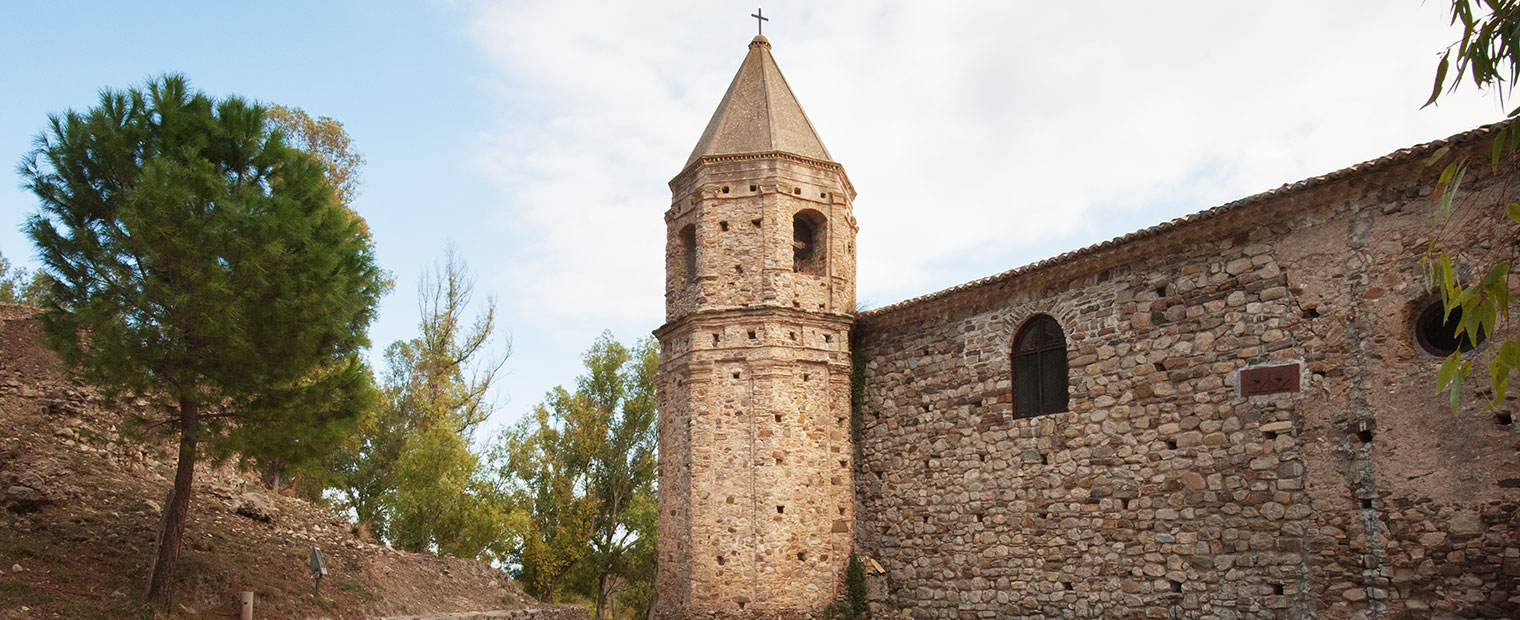The Metropolitan Area of Reggio Calabria, set between the two coastal fronts of the lower Ionian Sea on side, and the Tyrrhenian Sea on the other, has 97 municipalities: villages of great interest for both their historical and architectural features, and the wonderful landscapes that characterise them. It is an area at the centre of the Mediterranean whose history, not surprisingly, is strongly influenced by the different cultures of the people who have passed through here. In the heart of the metropolitan area of Reggio Calabria, between the approximately 220 kilometres of coastline that extends from Rosarno to Punta Stilo (Monasterace), lies the imposing Aspromonte massif that almost seems to retain the three main sides: the eastern Ionian south characterised by low coasts, and the southwestern and northwestern Tyrrhenian Sea, characterised by high frontal coasts. The territory, which hosts about 30% of the regional population with just under 60,000 inhabitants, presents profound contrasts to the landscape: sea and mountains together, key factors of the territory around which history, culture, and traditions are intertwined. Particularly rich is the naturalistic context that boasts a great variety of ecosystems and typical Mediterranean landscapes. It is a heritage that boasts examples such as the Costa Viola, the Riviera dei gelsomini, the Valley of Torbido, and the Valley of the Stilaro. On the Tyrrhenian side, the Piana di Gioia Tauro, is known for its port that ranks among the first places in the Mediterranean and in Italy for traffic intensity. The Ionian side responds with Locride, a typically rural area where traditional crops flourish and the Grecanica area (or Bovesia), located in the heart of the Amendolea valley. It is place with ancient roots in which some towns (specifically Bova, Gallicianò, Roghudi, and Roccaforte del Greco) pass on and still protect the use and knowledge of the Greek language.
Africo: one community, two towns
Founded in the 9th century BC by the inhabitants of the ancient Delia, a colony of Locri situated at the mouth of the San Pasquale torrent. Its name comes from the Greek term, άπριχος (aprichos) meaning luminous, full of sunlight.
Antonimina, nature and wellbeing in the heart of Locride
A markedly agricultural vocation gave origin to the small centre of Antonimina around the 15th century. The earliest traces of human settlements, in fact, belong to groups of shepherds who chose this location as the ideal place for their farming activities. This is also borne out by the name of “ter [...]
Ardore: harmony between the new and the old
Ardore is located less than a hundred kilometres from Reggio Calabria and three kilometres from the archaeological park of Locri Epizefiri. Between the two Condojanni and Pintammati rivers and the first hills of Aspromonte, overlooking the Ionian Sea in a breath-taking panorama between Punta Stilo a [...]
Bagaladi: At the foot of Aspromonte
Bagaladi is not only one of the two gates to the Aspromonte National Park, but also a small town with an extraordinary past. Starting with its name, which appears to be of Arabic-Greek origin, this village is the splendid fruit of the mixture of numerous cultures.
[...]
Bagnara Calabra: green and blue
Located at the bottom of the cove surrounded by green hills that steeply plunge into the blue waters of the Tyrrhenian Sea, Bagnara Calabra has been covered by the waters of the Messina Strait since ancient times. Historical hypotheses define Bagnara and the nearby Palmi, the head of the ancient Por [...]
Bianco: a divine village
A town that serves fine palates, Bianco is known both for its splendid beaches, which have been awarded the Blue Flag several times, and its Greco di Bianco, a DOC wine that makes it famous all over the world. Surrounded by limestone hills that from the sea look like an extensive white spot overlook [...]
